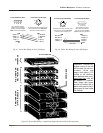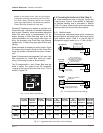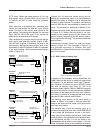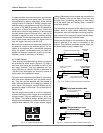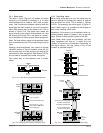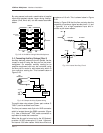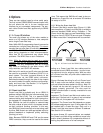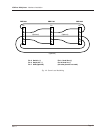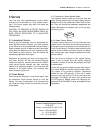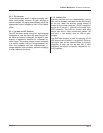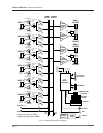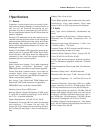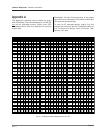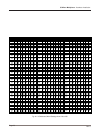
Page 23
IQ Mixer/Multiplexer Hardware Installation
Rev. 0
6 Technical Information
The
IQ System
was developed to provide a way to
both monitor and control complete sound systems
during operation. The system began with amplifier
control using plug-in IQ-P.I.P. modules in each am-
plifier and an IQ-INT to connect the system to a host
computer. The next major advance was the
MPX-6
,
the first intelligent mixer/multiplexer able to mix and
route audio inputs under computer control. Now, the
SMX-6
and
AMB-5
sensing mixers offer advanced
signal processing and have the capability of mixing
audio signals automatically.
6.1 Audio
6.1.1 Input Section
Each audio input signal first passes through a bal-
anced filter designed to eliminate RF interference.
The RF filters are a balanced network of chokes,
ferrite beads and capacitors that attenuate both
common-mode and differential-mode signals above
500 kHz. Optional input isolation transformers can
also be added by the factory.
The signal then enters the input switching circuit.
This circuit can insert a 25-dB pad for line level
signals or apply phantom power to the input termi-
nals (44 volts through two 6810-ohm resistors). The
signal is filtered again to eliminate lower-frequency
RF energy such as interference from the AM broad-
cast band. The signal then goes to the preamp
stage.
Each of the six input preamplifier stages is a bal-
anced circuit providing from 13 to 46 dB of voltage
gain. The preamp consists of a pair of low-noise
transistors followed by a high performance op-amp.
The transistors, in effect, convert the input voltage
to a current while maintaining reasonably high input
impedance. Their transconductance (output current
divided by input voltage) depends on the setting of
the gain control. The op-amp then converts the
current back to a voltage to drive subsequent cir-
cuits.
6.1.2 VCA Sections
Each preamplifier output drives two VCAs which
then drive the two current-summing mix buses. The
stack inputs also feed into the mix buses. The
VCA’s derive their control voltages from a multi-
plexer circuit driven from the microprocessor. The
microprocessor uses onboard
algos
or commands
from a host computer to control the VCAs (depend-
ing upon the model). Levels can be set in
1
¦2 dB
increments from 25 dB gain to 100 dB attenuation
(which is considered off).
6.1.3 Output Section
The two mix buses are sent to the corresponding
main output and auxiliary bus output stages. All
output stages are active, balanced and can drive
1200 ohms to +26 dBu or 600 ohms to +20 dBu. The
auxiliary bus output stages have internal relay con-
tacts which can connect or disconnect the signal to
the auxiliary bus output connector. These contacts
are controlled by the host computer and thus allow
programmed signal routing. Optional output isola-
tion transformers can also be added by the factory.
6.1.4 Level Sense Circuits (
AMB-5
and
SMX-6
only)
The output of each input preamp and each mix amp
is monitored by a corresponding level detector.
Each level detector tracks the peak level of the
signal and releases with a time constant of about 85
ms. The eight levels are sent to a multiplexer and
the A/D converter.
6.2 Control and Interface Section
The host computer communicates with the unit mi-
croprocessor either through an outboard IQ inter-
face (like an IQ-INT) via the Crown Bus, or directly
through the RS232/RS422 port. Each unit acts only
on commands with an address matching its own.
6.2.1 Crown Bus Interface
The serial loop (Crown Bus) connections on the unit
are made with an opto-isolated 4-pin removable
barrier block connector and a ground stud for the
optional connection of shielded wire. To prevent
ground loops, only the input cable’s shield should
be connected. These connections conform to
IQ
System
standards, which allow the host computer
to control numerous IQ components with the same
computer program.
6.2.2 RS232/RS422 Interface
Depending on selected options, the DB25 connector
can be used to communicate directly with the host
computer for setup or control of a Crown Bus loop,
or (
SMX-6
only) for connection to an RS422 Crown
Local Net. A switch selects either RS232 or RS422
operation.




